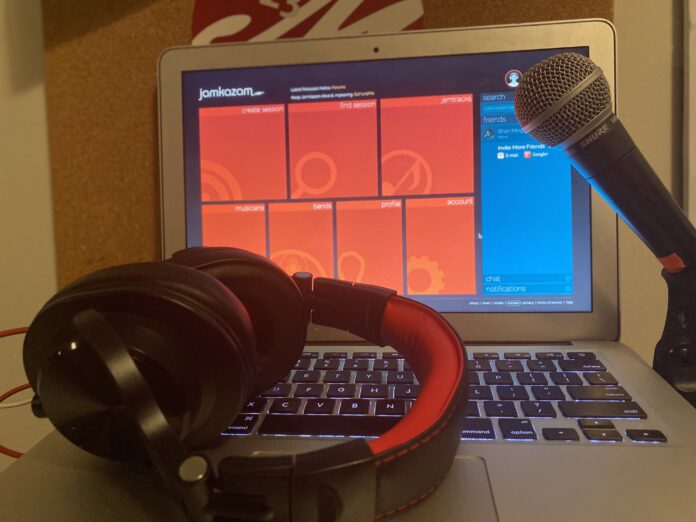COVID-19 challenged the performing arts community to become more technologically innovative than it’s ever been before, so last spring semester, faculty and staff in the The Music Department at Muhlenberg worked on finding new ways to teach their students remotely in an efficient way. Dr. Christopher Jackson, Assistant Director of Music and the Director of Choral and Vocal Studies explained that during the spring semester, the music department asked themselves how they could make meaningful art remotely.
Starting this fall, Dr. Ted Conner, Music Department Chair Professor, decided to have students use JamKazam. This program keeps latency low (which refers to a minimal delay in the processing of computer data over a network connection) to perform music and is used across the music department for lessons and ensembles. JamKazam has made virtual learning, communication and the use of instruments possible during this pandemic.
A student from the department says that it has been difficult using the application Zoom because of frequent technological malfunctions, but they are glad it is possible to still have the opportunity to make music. Dr. Conner also explained that it can become difficult getting ensembles online, considering that wind players cannot play with their masks on if they are not in a secluded location.
With the new wifi system the college put into place, technology works much faster than before, but the lagging of audio and picture is unavoidable. With everyone around the world being on Zoom around the same time, the platform has crashed periodically.
For those who are tech-savvy, JamKazam has a bit of latency. The set up can take a minute or two depending on the device it is being used from, but sound delay is minimized when compared to Zoom, which is essential for making music.
JamKazam has two different kinds of setups with different cost levels. Through the company Sweetwater in Indiana, students have been able to get the equipment they need at a discounted price. The first option for optimal setup costs $240 and is 10% of the original price; the package includes a condenser microphone, audio interface, and the option of an ethernet or a USB port.
The second method is to purchase an integrated headset for $25, which works, but may not be as efficient as the first set up. With COVID-19 causing a financial crisis, different need-based grants and funds have been given to students by the Dean’s Office to make music-making possible for students.
As for other updates in the program, the music department believes that it is vital to represent underrepresented artists and voices during this pandemic. This season, the department decided to have students focus on different woman composers. As a marginalized group, women have not been given as much credit as men often receive for their work. Considering that the majority of composers who are praised in society are men, Dr. Jackson recalls it being remarkable that students can celebrate and learn about various women composers from different backgrounds and perspectives.
The Women’s Ensemble is virtually meeting and performing pieces by Mari Valverde, who speaks five languages and is a part of the LatinX community. Another goal of the project is to take pieces of music by women that have not been published or recorded yet and provide recordings for them.
Making music is critical to students and faculty because not only is it a meaningful part of their lives, but it is many teachers’ passion to teach music, as it is many students’ passion to practice it. Teachers have found surprising benefits to working online, Dr. Jackson and Dr. Conner both agreed that there is nothing like live music-making, but the department has been creative in finding new teaching methods that were unable to be taught in person. Applied music staff and faculty have put more research into lessons and ensembles and they are proud of their efforts in doing so.
It can become exhausting looking at a computer screen or device for hours, for both students and teachers. Dr. Jackson said, “We are less connected to our bodies and unable to read one another’s body language…the body is needed to make music, it is the opposite of screen time, but this is why staff and faculty take all this time, to provide the tools necessary for students to succeed.”
Dr. Conner works with two ensembles and Dr. Jackson works with three. Dr. Conner believes that ensembles are different from classes because students are known on a personal level. Whether professors are working with students in an ensemble or during lessons, the music department’s passion for music making is what has gotten them through this pandemic.
As Dr. Ted Conner said, “We are not getting by, we are.”























Hey this Maria, I wrote this article and wanted to get my credit to use it, not sure why someone else’s name is put on it.